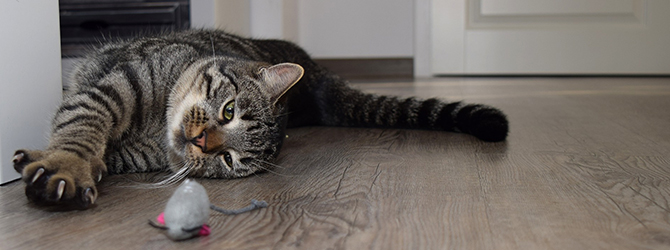Cat scratch disease: what it is and how to avoid it
If you listened to the tabloid press you could be forgiven for thinking cuddling a kitten could kill you. Thankfully, cat scratch disease is usually mild, and relatively rare.
But what is it?
Bartonellosis – commonly known as cat scratch fever or cat scratch disease – can be contracted by both cats and people. As the name suggests, it’s usually contracted by being scratched by a cat that’s carrying the condition and is caused by a bacterial infection that can be passed from cat to cat, and even from cat to owner.
While cat scratch disease is rare, it’s important to know how to recognise the condition and take steps to prevent it.
How do cats catch bartonellosis?
Most cats contract bartonellosis by coming into contact with flea faeces. Fleas leave bacteria on the cat’s skin, which the cat ingests through grooming.
The condition can also be passed to other cats and humans through a scratch or bite from an infected cat, or if the saliva of an infected cat gets into a graze or open wound.
What are the symptoms of cat scratch disease?
Cat scratch disease symptoms usually appear between seven and 14 days after infection, though it can take several weeks.
Symptoms in cats include:
- Fever
- Swollen glands
- A heavy infestation of fleas or ticks
- Loss of appetite
- Lethargy
- Depression
Symptoms in people include:
- Muscular aches and pains
- Fever or chills
- Swollen lymph nodes – particularly those in the armpit, head or neck
- General sickness and feeling unwell
- Stomach cramps
- Fatigue
- Swelling or infection around the scratch or bite
- Lumps around the bite or scratch
While cat scratch disease itself isn’t hugely dangerous to people, it can lead to complications – particularly in those with a compromised immune system.
Cat scratch disease treatment
Treatment of cat scratch disease in humans involves thorough cleaning and disinfecting of the affected area, including removing the pus to encourage healing, if necessary. Antibiotics may be prescribed to reduce the risk of infection.
Bartonellosis usually resolves itself quickly in cats – in many cases you may not even realise your cat has had the condition. In more severe cases, your vet will thoroughly clean the site of any wound, treat your cat for fleas if necessary, and may also prescribe antibiotics.
“While cat scratch disease itself isn’t hugely dangerous to people, it can lead to complications – particularly in those with a compromised immune system.”
Am I at risk of developing cat scratch disease?
You can develop cat scratch disease at any age. Women are more prone to the disease than men, and children aged between five and nine are most at risk.
Simple steps to avoid cat scratch disease
It’s not possible to avoid cat scratch fever altogether, but there are three simple steps you can take to reduce your chances of developing the infection:
- Regularly treat your cat for fleas.
- If you or your cat are scratched or bitten by another cat, be sure to clean and disinfect the area thoroughly, and stay vigilant for the signs and symptoms listed above.
- Always wash your hands after stroking or handling your cat.
Want advice on cat scratch disease?
For expert advice on cat scratch fever get in touch with your local vet.
Find your nearest vet using our Find a Vet page, or speak to a vet online using Online Vets.

